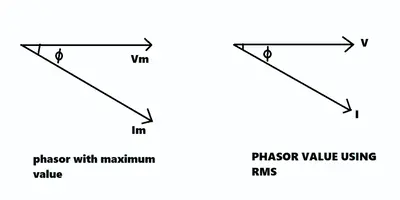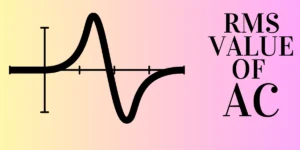introduction to RMS Value Of Ac
When it comes to understanding and dealing with alternating current (AC) in electrical engineering, one term that frequently appears is “RMS.” But what exactly is RMS, and why is it so important in the world of electricity and electronics? In this article, we will delve into the concept of RMS, its significance, how it’s calculated, and its applications in various fields.
Article Content
ToggleWhat Does RMS Stand For?
RMS Value Of Ac stands for “Root Mean Square.” It’s a mathematical method used to find the square root of the mean of the squares of a set of values. In the context of AC, it represents the effective value of a varying voltage or current .
know more : single line diagram component and its works
Importance of RMS Value
The History of RMS Value
The concept of RMS value of ac dates back to the early days of electricity. It was developed to address the need for a single value that could represent the heating effect of an AC current in a resistor. Over the years, RMS has become a standard in electrical engineering.
Calculating RMS Value
To calculate the RMS value of AC waveform, one must square each data point, find the mean of these squares, and then take the square root of this mean. This process results in a single value that represents the AC signal’s magnitude in a way that can be compared to a DC value.

RMS Value in Electrical Engineering
In electrical engineering, RMS value plays a fundamental role in designing circuits, determining power consumption, and ensudring the safe operation of electronic devices. It’s a cornerstone in the analysis of AC circuits and is used extensively in circuit theory.
Applications of RMS Value of ac
The applications of extend beyond electrical engineering. It is widely used in audio engineering to measure the power of audio signals, making it crucial for high-quality sound systems. Additionally, RMS is used in fields like vibration analysis and signal processing.
RMS Value vs. Peak Value
It’s essential to distinguish RMS value from peak value. The peak value represents the maximum value a waveform reaches, while the RMS value provides information about the effective value, which is lower than the peak value. Understanding this difference is essential when working with AC signals.
form factor Vs. peak factor
there existsa definite relationship among peak value , average value and rms value of an alternating quantity.this relationship is expressed by two factors , name from form factor and peak factor
the value of form factor depand upon the waveform of the alternating quantity.its least value is “1”. for square and rectangular wave maximum is “5” for other wave.the form factor for an alternating voltage or current varying sinusoidal is “1.11”.
the peak value factor also Depends upon the waveform of the alternating quantity.for an alternating voltage or current varying Sinusoidaly , its value is “1.414”.
Advantages of Using RMS
One significant advantage of using RMS is its ability to provide a standardized and easily comparable representation of AC signals. This simplifies calculations and ensures that measurements are consistent and reliable.
Challenges in Measuring RMS
While RMS is a valuable metric, measuring it accurately can be challenging. Factors such as harmonics, noise, and waveform distortions can affect the precision RMS of ac measurements.
Factors Affecting RMS Value
Several factors can influence the RMS value of an AC signal, including frequency, amplitude, and waveform shape. Understanding these factors is essential for engineers and technicians.
Common Misconceptions About RMS
There are several misconceptions surrounding RMS, including the belief that it is the same as the average value of a signal. This section will address and debunk some of these common misunderstandings.
Practical Examples of RMS
To illustrate the real-world applications of RMS value of ac , we’ll provide practical examples. These examples will showcase how RMS is used in circuit analysis, audio engineering, and other fields.
Future Trends in RMS Measurement
As technology advances, the measurement and application of RMS are evolving. We’ll explore some of the future trends in RMS measurement and how they might impact various industries.
know more : Electrical Circuit Analysis
Conclusion:
In conclusion, the RMS value of AC is a fundamental concept in electrical engineering and beyond. It provides a standardized and effective means of representing AC signals, enabling accurate comparisons and calculations. Understanding RMS is crucial for anyone working with AC currents and signals.
FAQs:
1. Why is RMS important in electrical engineering?
RMS is essential in electrical engineering because it allows for the comparison of AC signals with their equivalent DC values, aiding in circuit design and analysis.
2. How is RMS different from peak value?
RMS represents the effective value of an AC signal, while the peak value indicates the maximum value reached by the waveform.
3. What are some challenges in measuring RMS?
Measuring RMS accurately can be challenging due to factors like harmonics, noise, and waveform distortions.
4. Can you provide an everyday example of RMS use?
RMS is used in audio engineering to measure the power of audio signals, ensuring high-quality sound reproduction.
5. How has RMS measurement evolved over time?
With technological advancements, RMS measurement methods are evolving, offering more accurate and efficient ways to analyze AC signals.

